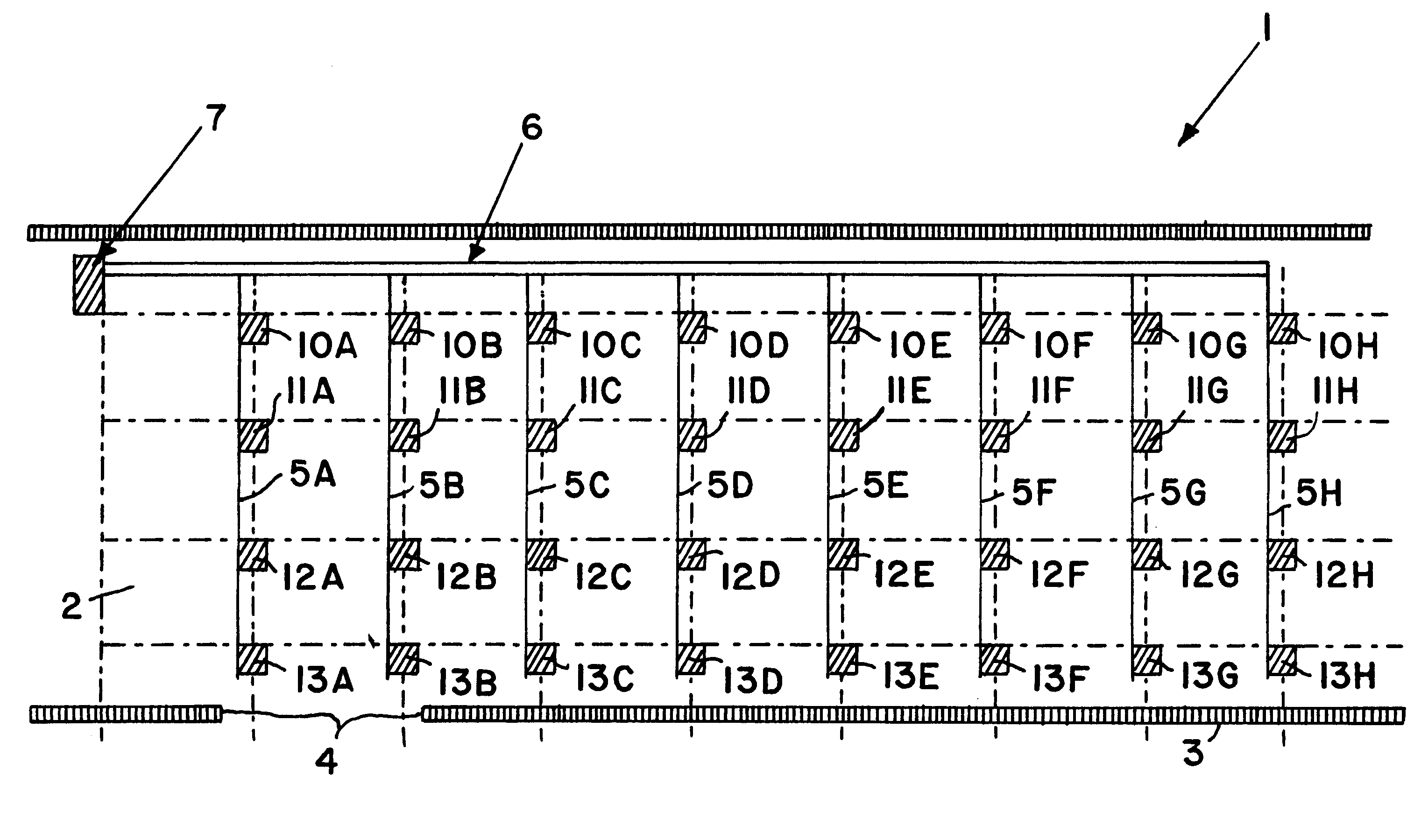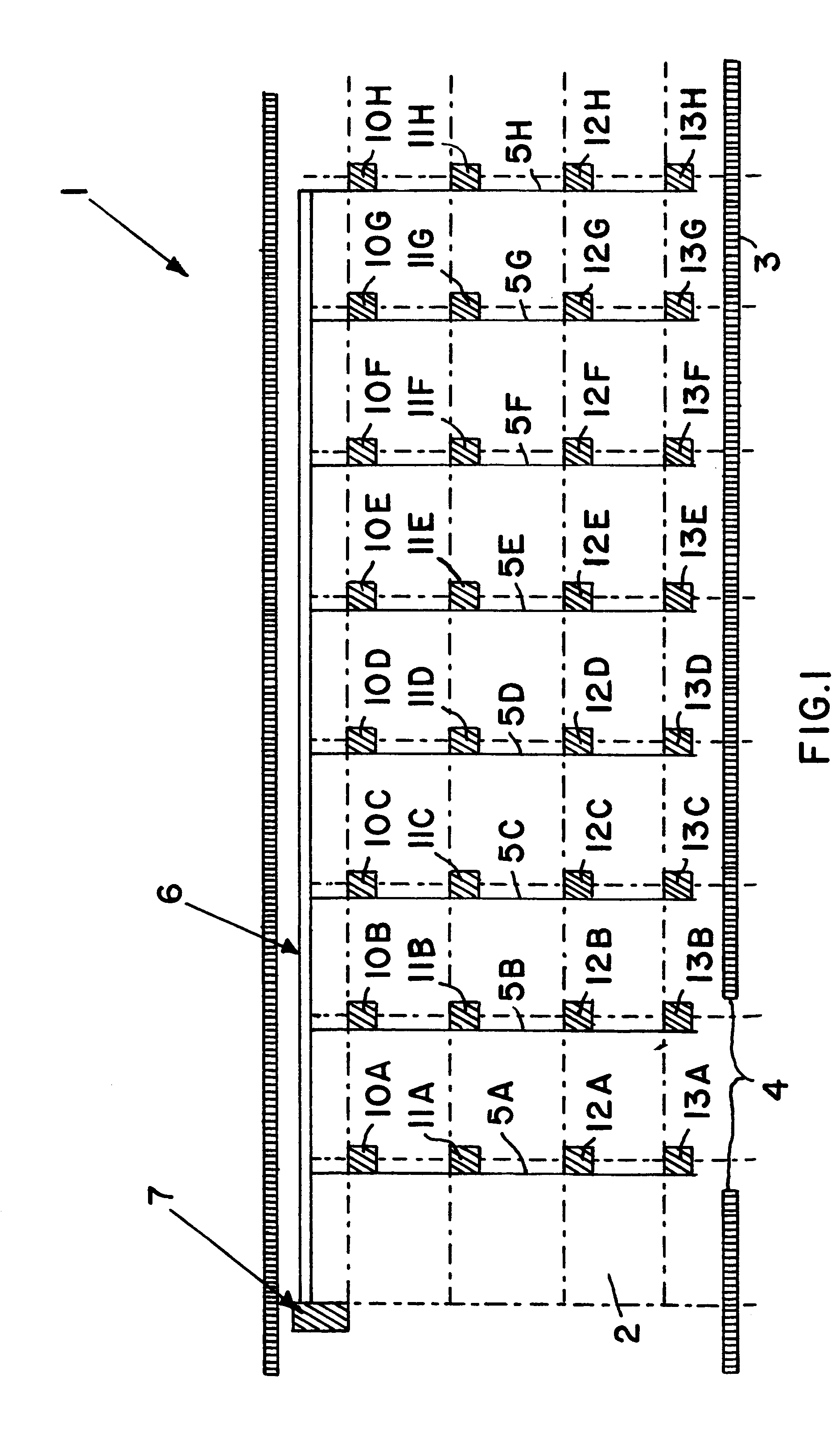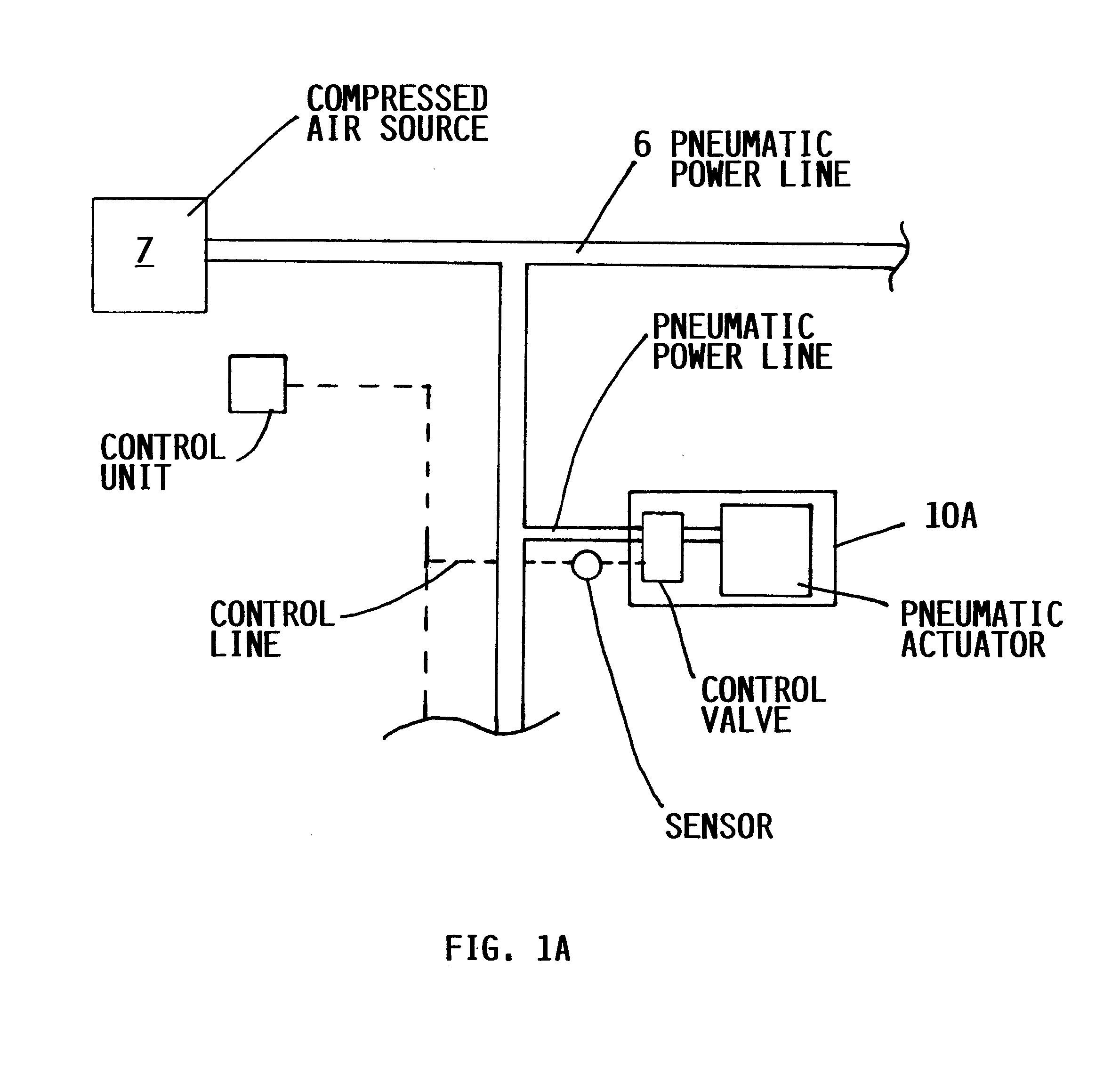Pneumatically actuated freight loading system for an aircraft
a pneumatic actuator and aircraft technology, applied in the direction of loading/unloading vehicle arrangment, transportation items, load accommodation, etc., can solve the problems of high wear and tear of drive rollers, and high maintenance cost and effor
- Summary
- Abstract
- Description
- Claims
- Application Information
AI Technical Summary
Benefits of technology
Problems solved by technology
Method used
Image
Examples
first embodiment
FIG. 1 schematically shows a top plan view of a freight loading system 1, in terms of its layout within the freight compartment or cargo hold 2 of an aircraft. The freight compartment 2 is outwardly bounded by the corresponding structural components (not shown in detail) of the aircraft fuselage 3, whereby an opening 4 is provided through the fuselage 3 for accessing the freight compartment 2. The opening 4 is typically a freight loading doorway or hatch, which is closed by a freight loading door or gate when the process of loading or unloading freight or cargo load units such as containers, pallets, or the like has been completed. Throughout this application, the term "freight load unit" refers to any known unit for loading or unitizing freight or cargo, such as containers, pallets, totes, and the like. These freight loading units may have any conventionally known configuration and construction to be effectively used in connection with the inventive freight loading system 1.
The fre...
second embodiment
Since the present second embodiment of a freight loading system 1' uses electronic control lines 6A with a control voltage of 28 volts, in combination with pneumatic lines and pneumatically actuated devices, the present embodiment realizes an electro-pneumatically functioning freight loading system 1'. In contrast to a conventional purely electrical freight loading system, which must provide electrical power at a relatively high voltage, e.g. 115 volts, to provide the necessary motive power, the present electro-pneumatic freight loading system 1' uses rather low control voltages and control currents, not for driving the drive units and latching units, but merely for operating and controlling the pneumatic control valves. For this reason, the above described problems of electromagnetic interference and electrochemical corrosion suffered by purely electrical freight loading systems, are minimal in the present inventive system. Also, the control lines 6A are arranged only along the out...
third embodiment
This third embodiment of the freight loading system 1", with the pneumatically acting control lines 6A' and SA' to 5H' leading from a central pneumatic control unit 8 or 8A, represents a purely pneumatically operating freight loading system according to the invention. In this embodiment, no electrical devices or current-carrying lines or the like are provided in the freight compartment 2 at all, so that all of the above mentioned dangers and disadvantages of such electrical conductors and devices can be avoided.
As a further alternative embodiment of the invention, only some of the drive units and latching units may be embodied as pneumatic components while other individual components are still embodied as electrically operating components, or only the drive units and latching units in certain areas of the freight loading system are pneumatically operated while the components in other areas of the freight loading system are embodied as electrically operated components according to th...
PUM
 Login to View More
Login to View More Abstract
Description
Claims
Application Information
 Login to View More
Login to View More - R&D
- Intellectual Property
- Life Sciences
- Materials
- Tech Scout
- Unparalleled Data Quality
- Higher Quality Content
- 60% Fewer Hallucinations
Browse by: Latest US Patents, China's latest patents, Technical Efficacy Thesaurus, Application Domain, Technology Topic, Popular Technical Reports.
© 2025 PatSnap. All rights reserved.Legal|Privacy policy|Modern Slavery Act Transparency Statement|Sitemap|About US| Contact US: help@patsnap.com



